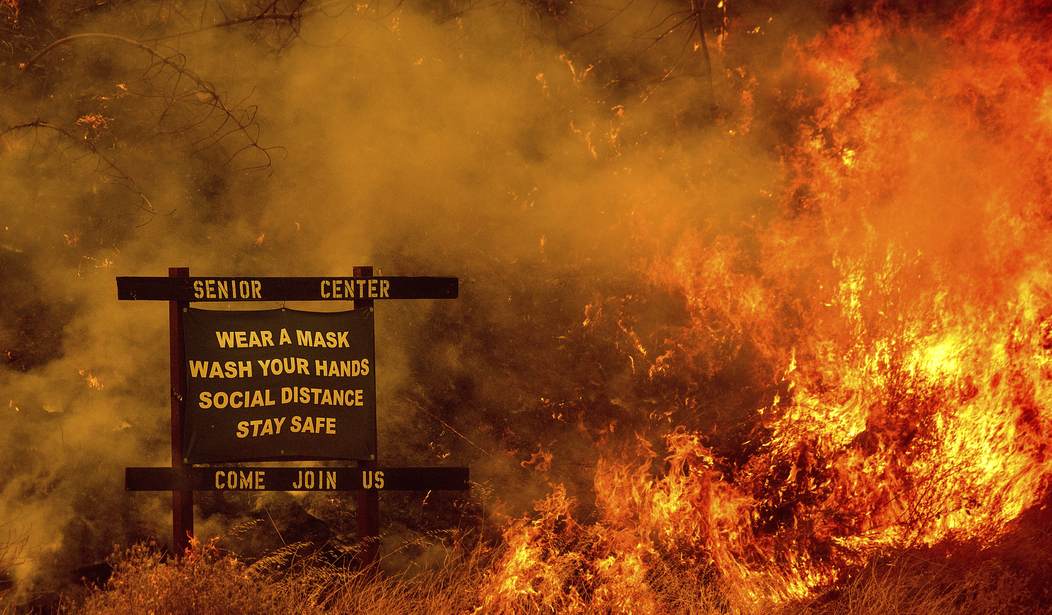Have you been experiencing a feeling lately that the world is just going to hell in a handbasket? And I mean that things are going off the beam to an even greater degree than they usually did in the past. If so, it turns out that you’re not alone. One group in the United Nations declared this week that things really are worse than you remember, and they won’t be improving any time soon.
I only learned just today that among its many other commissions, panels, and conglomerates, the United Nations has an “Office for Disaster Risk Reduction.” I found this out because the UNDRR just released its annual report on the current rate of disasters taking place and its projections for how many similar disasters will take place in the future. In the UN’s assessment, we’re seeing more disasters per year on planet Earth than in the entire time they’ve been tracking such catastrophes. And their ten-year predictive model says that even more bad news is on the way. (Associated Press)
A disaster-weary globe will be hit harder in the coming years by even more catastrophes colliding in an interconnected world, a United Nations report issued Monday says.
If current trends continue the world will go from around 400 disasters per year in 2015 to an onslaught of about 560 catastrophes a year by 2030, the scientific report by the United Nations Office for Disaster Risk Reduction said. By comparison from 1970 to 2000, the world suffered just 90 to 100 medium to large scale disasters a year, the report said…
People have not grasped how much disasters already cost today, said Mami Mizutori, chief of the UN Office of Disaster Risk Reduction, “If we don’t get ahead of the curve it will reach a point where we cannot manage the consequences of disaster,” she said. “We’re just in this vicious cycle.”
The report is simply named the Global Assessment Report. It counts the number of “medium” and “large-scale” disasters or catastrophes taking place each year. In the last third of the twentieth century, the world averaged between 90 and 100 catastrophes per year. Now we’re up to more than 400. And by the end of the decade, they predict the number will rise to 560.
At first I thought they would be including things like Russia invading Ukraine or the collapse of Afghanistan under the rule of the Taliban. But those apparently don’t count. There’s a chart at the bottom of the page I linked above and it breaks down the categories of disasters that the UN is monitoring. Let’s see what they have.
- Drought
- Earthquakes
- Extreme Temperature
- Floods
- Landslides
- Mass Movement (dry)
- Storms
- Volcanic Activity
- Wildfires
The report focuses on the need for nations to be better prepared to respond to such catastrophes, which is a fair point. Many losses incurred from events like these wind up being uninsured and they do impose hardship on people. The other focus of the report deals with the need for people to do more around the world to prevent such things from happening.
But in at least some of these situations, it’s difficult to see what can be done to actually prevent them. We have no control over earthquakes and volcanic activity. We’re still not even entirely sure how they work. “Mass movements” (or “mass wasting”) is defined as the movement of mass down slopes under the force of gravity. I’m not sure how that’s different from landslides, but it doesn’t sound like something we can do much about unless somebody figures out how to alter gravity. All of these things have been happening since the planet cooled. That’s just the earth being the earth.
The rest of the catastrophes can, of course, be blamed on climate change, so it’s all your fault. And the UN embraces that concept eagerly. We’re not going to start beating that dead horse here again, but you’ve probably got the gist of what’s being said now.
Personally, I’m more worried about social erosion over the next ten years than soil erosion. On a smaller scale, we have the ongoing culture wars in the United States between progressive and conservative values that seem to be spiraling increasingly toward the point of irreconcilable fractures. Any form of civil war would be catastrophic in the most literal sense of the word. Globally we have been watching the emergence of a new, 21st-century Axis of Evil, including Russia, China, Iran, North Korea, and increasingly Turkey. Even if the war in Ukraine manages to end without sparking a nuclear confrontation, the underlying divide between the sides won’t be going away. And the next flare-up could still trigger a worst-case scenario. That’s what keeps me up at night these days far more than wildfires or sea levels.








Join the conversation as a VIP Member